iFi AUDIO NEO iDSD 2 REVIEW
Oscar Stewart takes a listen to the iFi Audio NEO iDSD 2, the successor to the brand’s NEO iDSD.
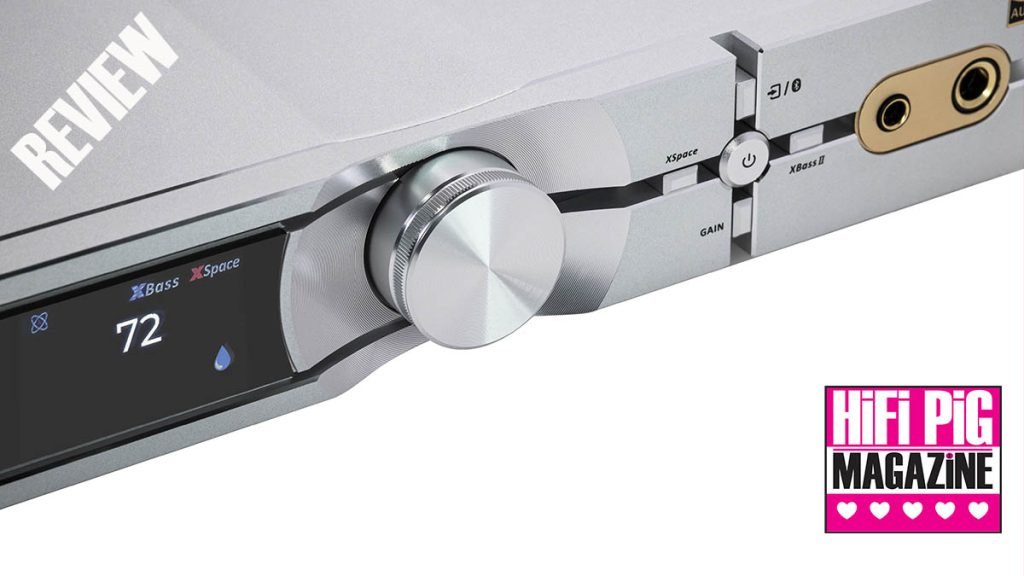
iFi had a big year last year with a range of product releases from brand-new models to updated and improved versions of previous ones. The NEO iDSD 2 is the successor to the incredibly popular NEO iDSD, but this isn’t a simple refresh, it’s an extensive overhaul and has some excellent new features. Let’s dig into this feature-rich DAC/headphone amp/pre-amp and see what it has to offer!
BUILD QUALITY AND FEATURES OF THE NEO IDSD 2
The NEO iDSD 2 comes in that classic iFi Audio silver finish and compliments other NEO devices such as the NEO Stream – it’s a rectangular shape with an offset knob and a small screen to show you the settings and volume level. On the right side you have buttons for the different features (more on those later) along with the two headphone outputs (4.4mm and 6.3mm). The build quality is excellent, the casing is aluminium and there is a plastic cover on the back left side where the Bluetooth antenna sits. It comes with a nice metal remote too. I have no issues with any of the inputs and outputs, they all feel great and the knob on the front has tactile steps, which feel great in use.
Feature-wise this is a DAC, headphone amp and pre-amp all in one. Starting with the DAC section, iFi is using their usual Burr-Brown bit-perfect DAC chip in this device and they sure do know how to optimise these chipsets. You get full high-res support up to PCM 32/768kHz, DSD512 and MQA decoder, there are USB, Coaxial and Optical inputs for the DAC section as well as single-ended RCA and Balanced XLR outputs. You also get Bluetooth which uses the latest aptX Lossless codec, promising lossless quality from devices that also use this codec. Also supported are the usual aptX Adaptive, LDAC, LHDC, AAC, regular aptX and SBC codecs. Interestingly, the NEO iDSD 2 features a clock input, allowing you to sync the NEO iDSD 2 with an external clock source – this is going to appeal to some but, for most of us, the high-quality internal clock is more than sufficient.
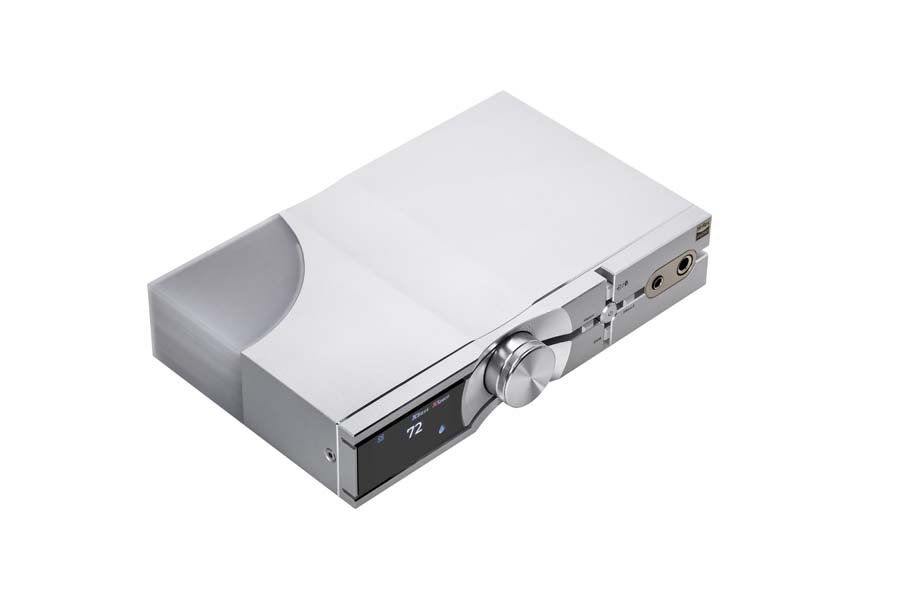
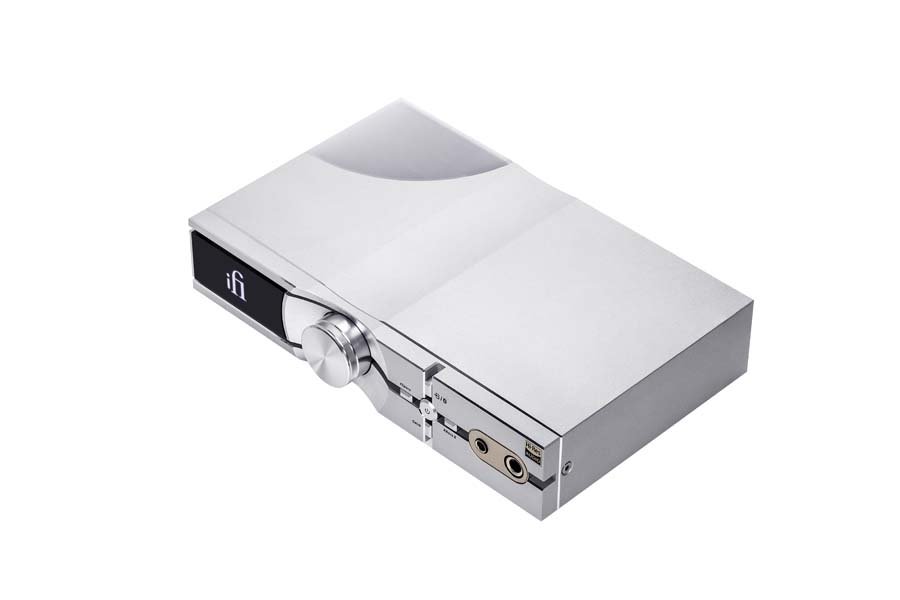
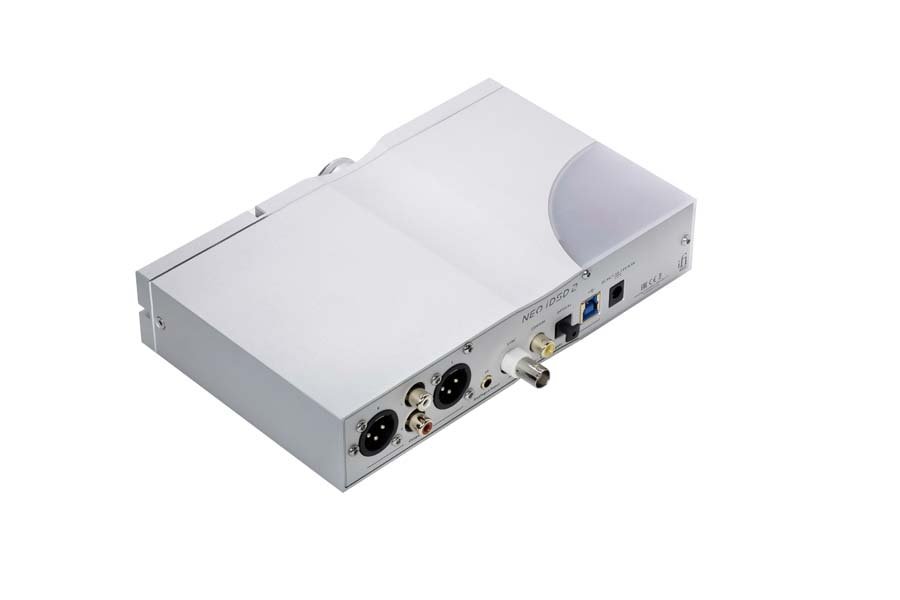
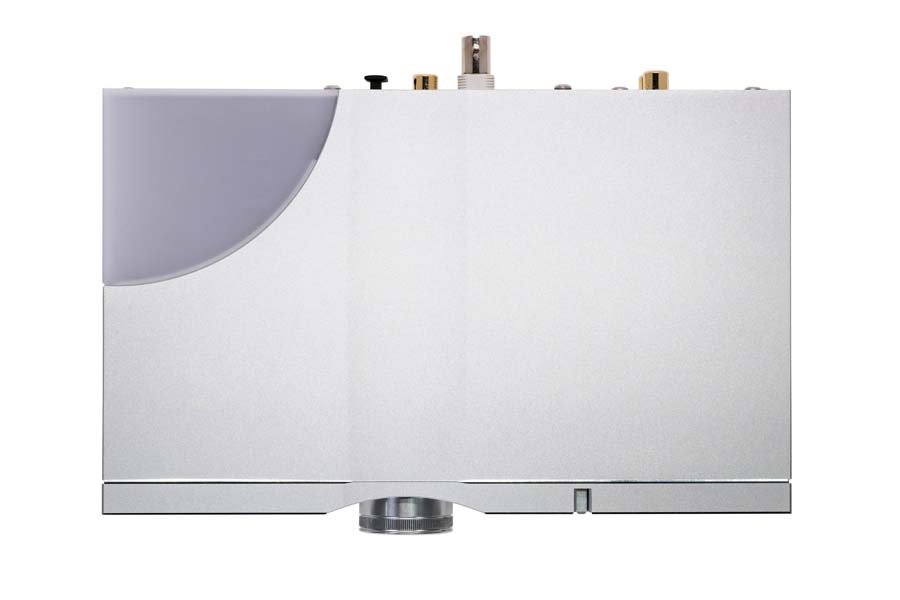
You can select between 4 different DAC filters; bit-perfect, Normal, Minimum Phase and GTO (Gibbs Transient Optimised.)
Pre-amp wise you can set the volume of the analogue outputs to be controllable for ease of use with active speakers and power amplifiers. IFi Audio has also included a single 3.5mm analogue input on the NEO iDSD 2, allowing it to be a pre-amp for various sources and controllable via the included remote. The analogue input also stays in the analogue domain and does not get converted to digital, and the various sound tweaks are also implemented in the analogue domain – there is no DSP going on here. This 3.5mm input can also be used with the headphone amp section, allowing you to hook up an analogue source to then listen through your headphones with.
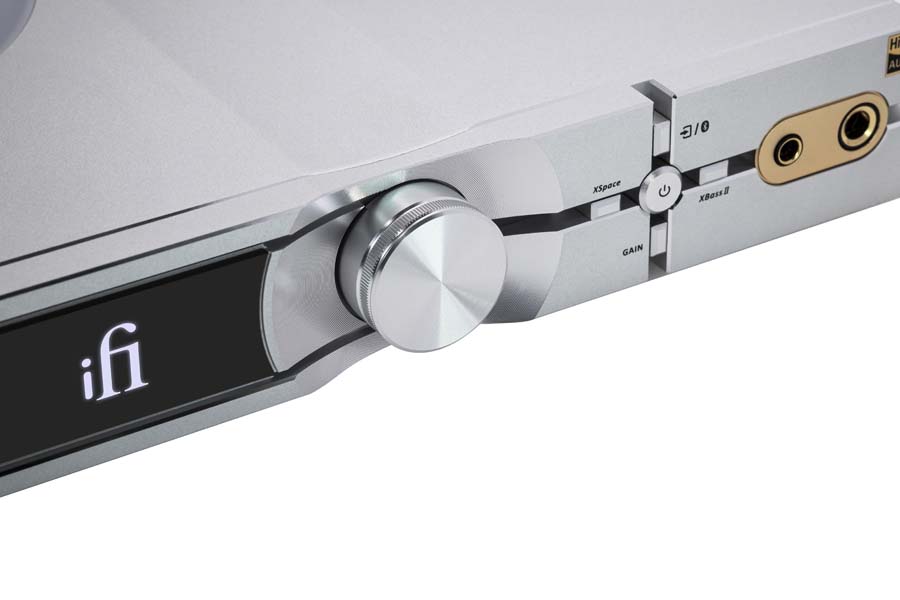
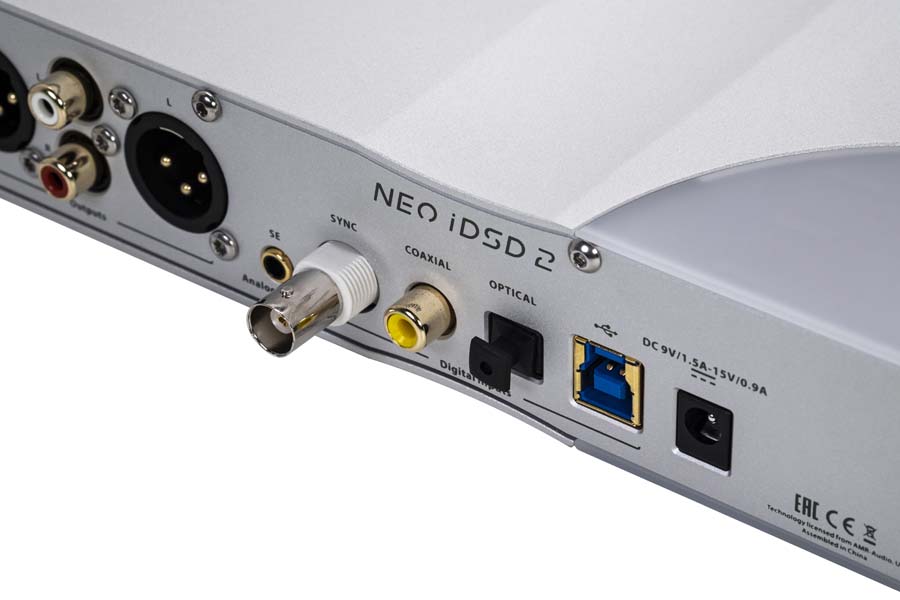
Now, on to the headphone section. This is one of the big changes from the previous model and iFi audio has really beefed up the output to rival a few standalone headphone amps. Whilst their old model could only muster up 295mW into 32Ohms, this model can hit 5551mW peak into 32Ohms (this is peak, RMS it can do 2530mW into 64Ohms via its balanced output) – single-ended output is lower as the headphone amplifier uses a proper balanced differential circuit. This is one device where using balanced really can be beneficial when running harder-to-drive headphones and, it’s definitely got plenty of power for most headphones.
IFi has incorporated 4 gain levels from -12 to +16dB, allowing you to use it with sensitive IEMs and power-hungry planars alike. There is also their XSpace setting which is a type of cross-feed circuitry and XBass II which offers up 3 modes, XBass, Presence and XBass + Presence. The screen brightness can be toggled in the menu as can the fixed/variable volume output (annoyingly this setting resets every restart to non-adjustable, I am hoping a firmware update fixes this).
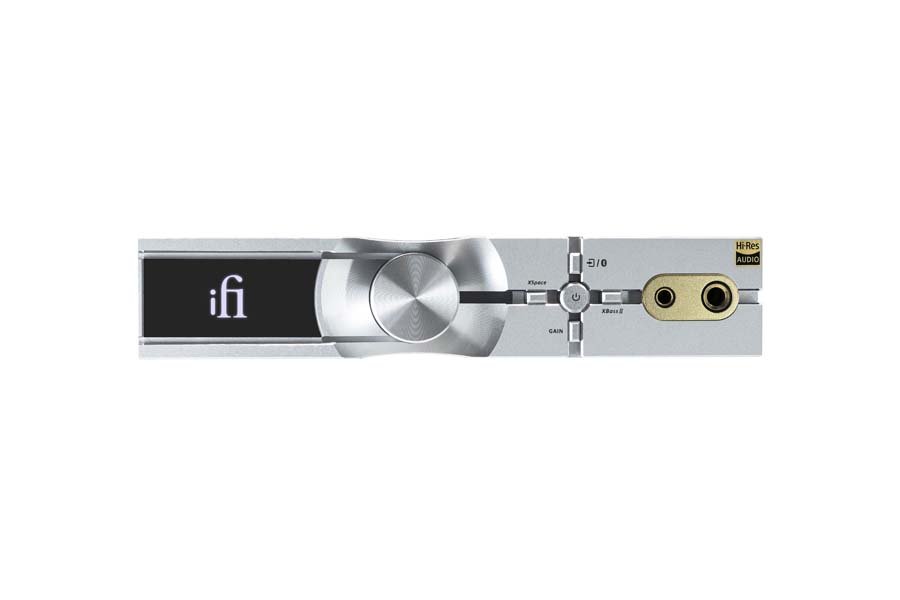
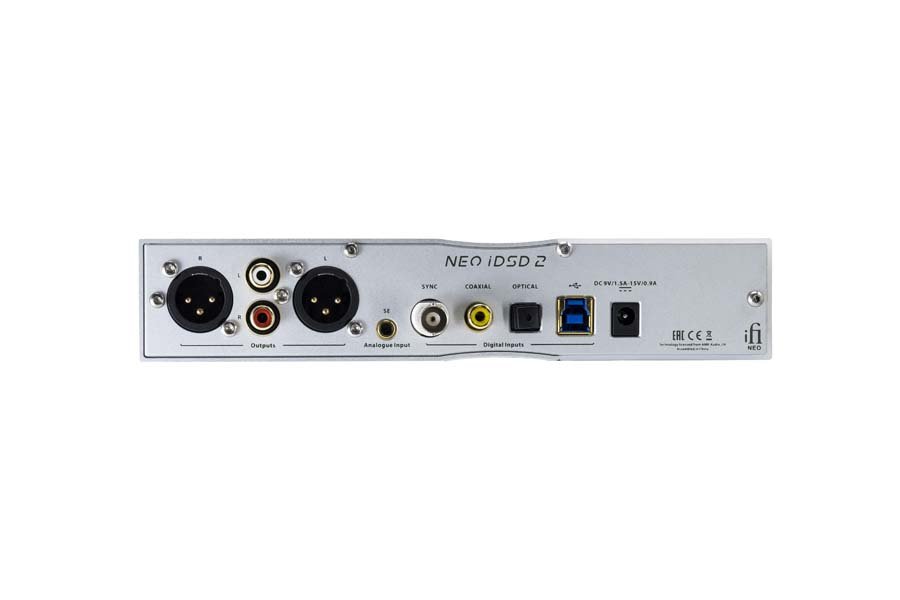
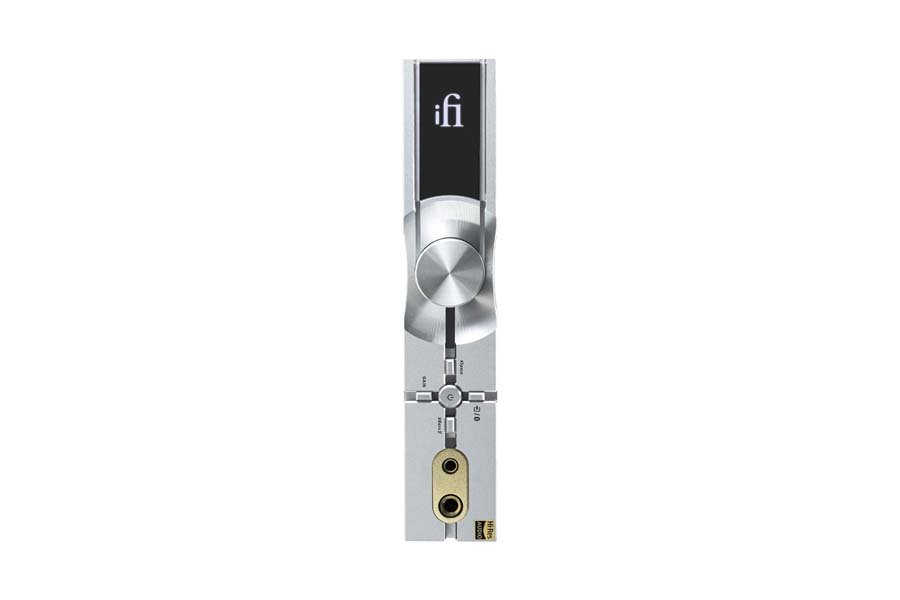
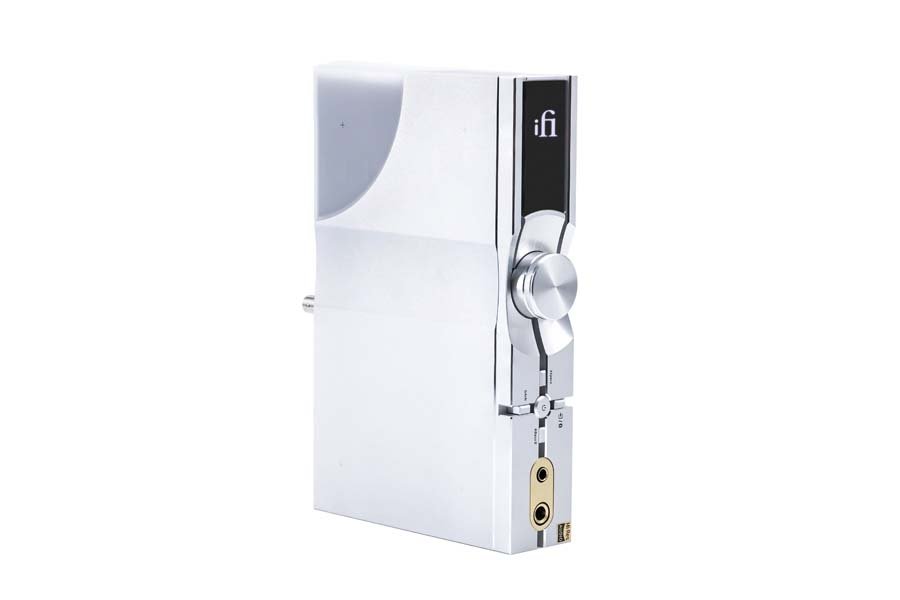
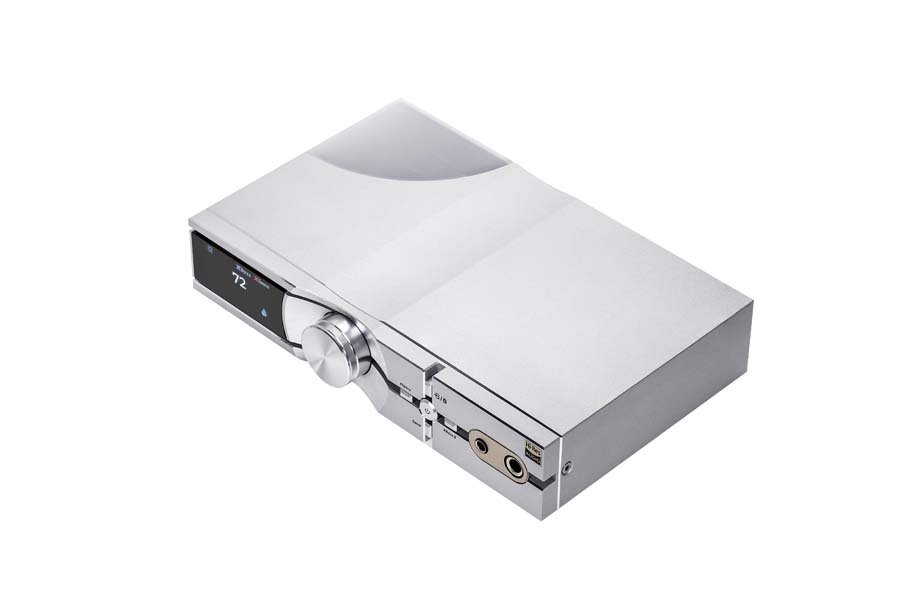
SOUND QUALITY
I’ve used the NEO iDSD 2 as both a DAC/Headphone amp, DAC/Pre-amp, Pre-amp and DAC – ensuring I fully put it through its paces with plenty of different setups.
First off, when using this as a pre-amp there is a slight click/noise between inputs which is audible through your speakers, I believe this is due to them using MOSFET switching rather than relays (for better sound quality) but it is something I noticed in use. I used this as a pure pre-amp with an analogue input into a power amp and it’s probably about as transparent as any pre-amp gets, I didn’t notice any appreciable difference between this and a passive pre-amp, which is a testament to the all-analogue pre-amp stage.
Putting the DAC into the signal path though is where this combo’s strengths start to show. Being well versed in how to make the Burr-Brown chipset sound excellent, there is a familiar house sound at play here. IFi have the brilliant ability to make very sonically enjoyable devices that also impress on a technical level, there is a natural and almost “analogue” tinge to their sound but it doesn’t ever mask the finer details. I have found myself preferring their “bit-perfect” DAC filter overall but, do play around with them as they make a subtle difference to the sound.
Running the XLR outputs into the Feliks Audio Envy, powering the HiFiMAN Susvara, is a beautiful setup and one that have all the technical qualities of a high-end system but without any cold or analytical qualities. In comparison to the S.M.S.L D6s, which is strictly neutral and flat, the NEO iDSD 2 has a little more body and texture but without sounding “warm” as such. It makes for a superb DAC in any setup, one that’s very resolving and engaging whilst allowing you to enjoy the music without wanting to pick it apart.
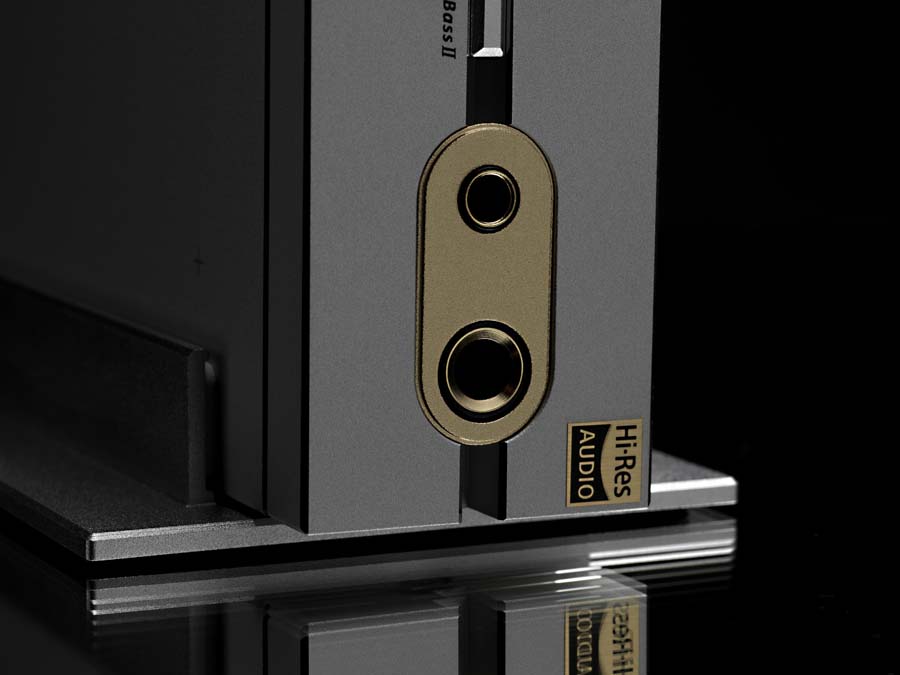
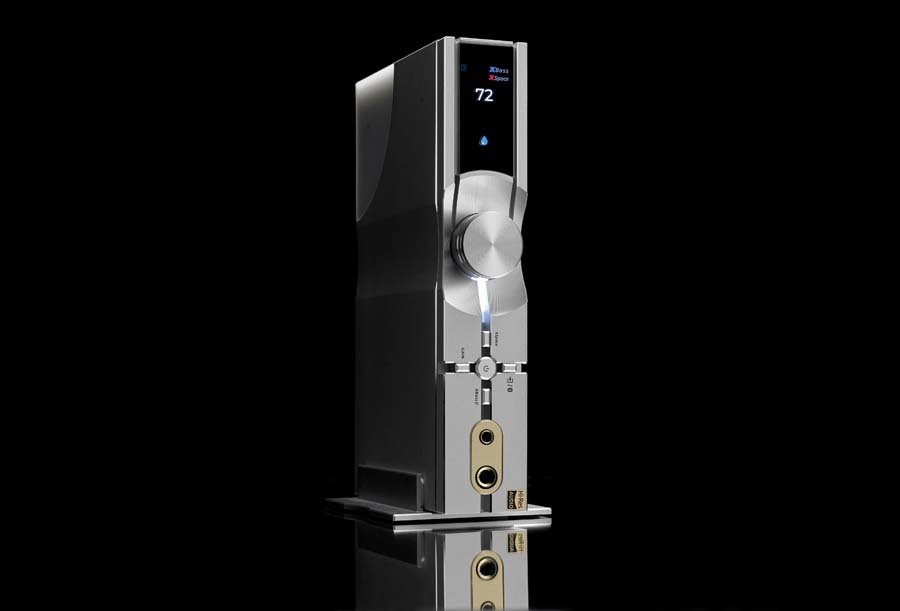
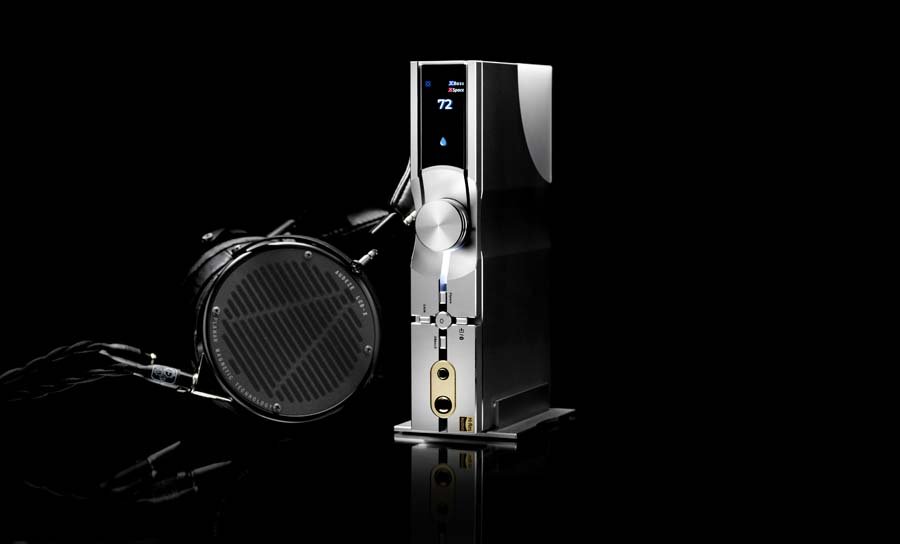
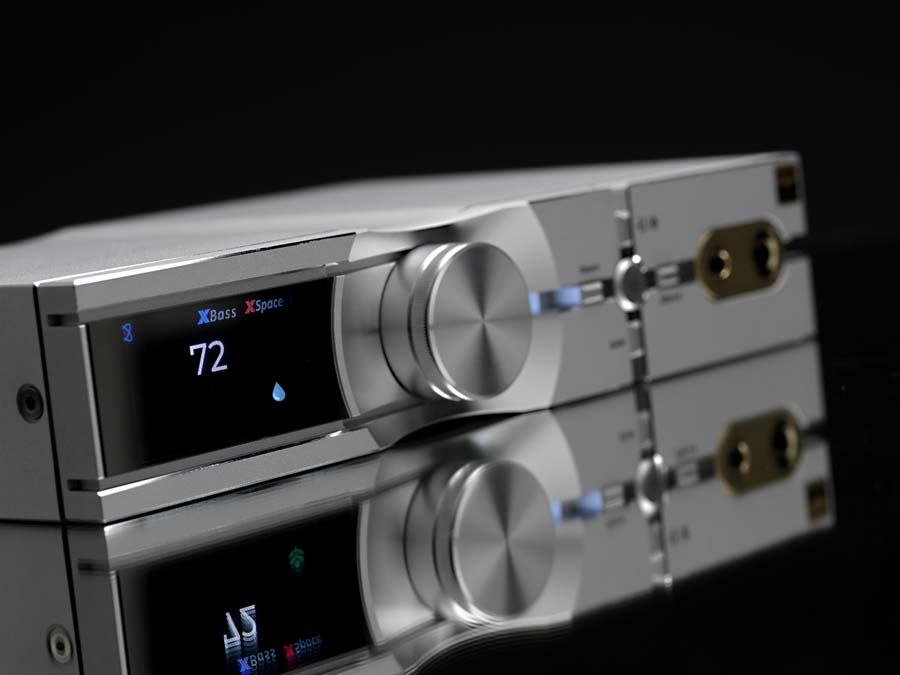
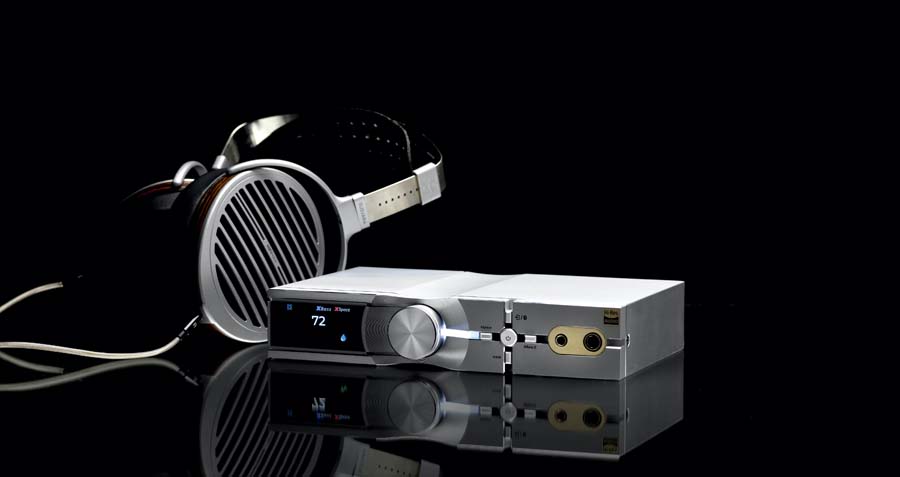
However, the main attraction of the NEO iDSD is going to be its use as a DAC/Headphone amplifier combo and this is where most of my listening was focussed. I used it with sensitive Westone MACH80 earphones, Beyerdynamic DT880 600 Ohm headphones, HiFiMAN Susvara, and more. The previous model, the NEO iDSD, worked better as a standalone DAC – this version does that, as well as being a powerhouse of a headphone amplifier.
IEMatch allows you to use the NEO iDSD 2 with sensitive earphones, it lowers the gain and allows you to set a more comfortable listening level. It works wonders and really does increase the flexibility without losing the core qualities of the DAC/Amp – suffice to say, earphones really don’t pose much of a challenge for the NEO iDSD 2.
Now, I did try the Susvara with the NEO iDSD 2 and had to put the gain up to Nitro to get good levels out of them, and to be quite honest it drives them fairly well. No, it doesn’t quite match some other amps in terms of dynamics and punch, but it was an enjoyable listening experience and I was quite surprised it managed to get good levels out of them without any sign of struggling. However, much like it doesn’t break a sweat with easy-to-drive earphones, it wasn’t necessarily designed to power some of the most difficult headphones on the market.
So, let’s pair it with something more suitable, the Beyerdynamic DT880 600Ohm, one of my favourite headphones that is not very expensive. These require a bit of power behind them and I had the NEO iDSD on Turbo gain and it has more than enough oomph to do these headphones justice. Leftfield – Space Shanty has a crisp and clean sound that is both spacious yet precise and is one of those songs where XBass has a good use, giving these neutral-sounding headphones a slight boost in the low end. Using just the first XBass setting gives a bit of a sub-bass boost that helps flesh out slightly flatter-sounding headphones. For the most part, I didn’t find myself using the Xbass function and with most music the extra sub-bass boost wasn’t needed. The Used – Blue and Yellow for example benefits from the well-separated and controlled sound of the NEO iDSD 2, the panned vocals are well placed within the soundstage and the instruments all occupy their own space, allowing you to really focus on certain parts should you wish. And whilst it is a clean and crisp sound, it isn’t cold, there is still that hint of warmth and texture to the sound that prevents it from becoming fatiguing.
My phone only supports LDAC/regular aptX and it defaulted to LDAC with the NEO iDSD 2 – it’ll be a little while before aptX Lossless is more widely available on phones. For Bluetooth sound testing I decided to use the Meze 109 Pro headphones, these are quite easy to drive and only required regular gain, and I must say for something that’s being streamed via Bluetooth it sounded very good. Ok, it’s not quite as detailed, wide or dynamic as lossless via USB, but it does give you admirable quality from a Bluetooth source and the drop in quality is most noticeable when going from a lossless source immediately to Bluetooth.
Wrapping this review up, I went back to USB input using the Meze 109 Pro and this is a fantastic pairing! There is plenty of punch where needed and superb detail retrieval. Against The Current – Blindfolded (acoustic) is beautifully rendered with excellent guitar texture and Chrissy’s vocals are smooth and natural. The low end has body and warmth without sounding thick, the treble has excellent extension without harshness, and the natural tonality of the NEO iDSD 2 compliments the detailed and engaging sound of the Meze 109 Pro.
Xbass has 3 settings, I found the first step (just XBass) to add some nice sub-bass presence and warmth to thinner-sounding headphones, the second mode (Presence) will work with some headphones that need a bit of an upper-midrange boost, and the XBass+Presence option will work well with some headphones but not as well with others. Personally, I think the first stage of XBass will probably be the most used in terms of this feature.
XSpace is a type of crossfeed circuitry that really does boost the space and changes the presentation slightly. This works well with more closed-in sounding headphones and works well for those who find stereo headphone sound to be a little unnatural – I like the inclusion of circuitry like this.
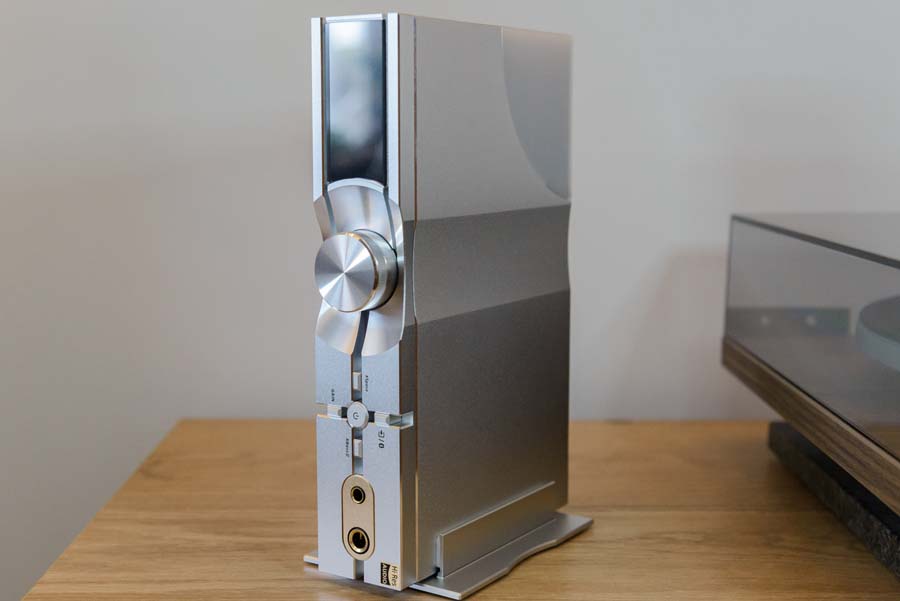
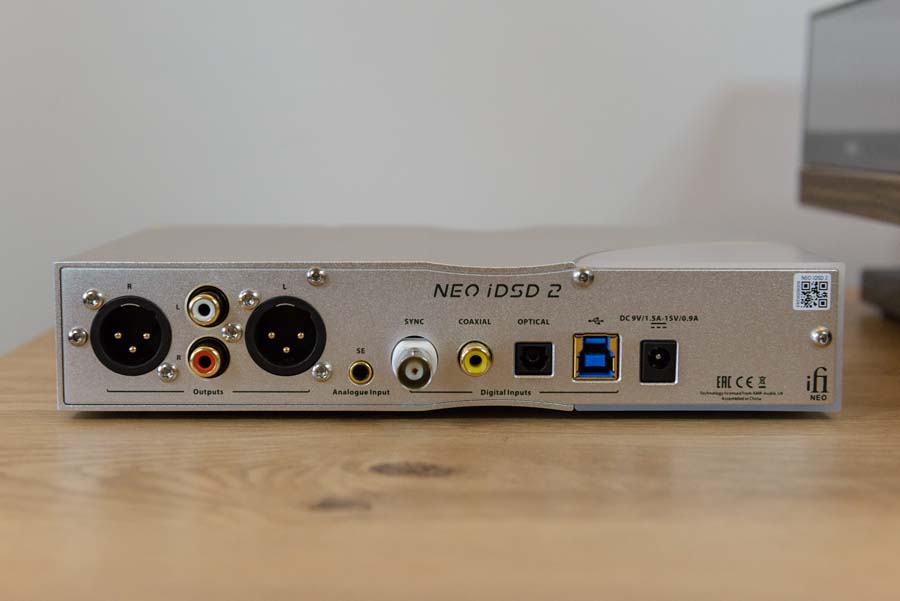
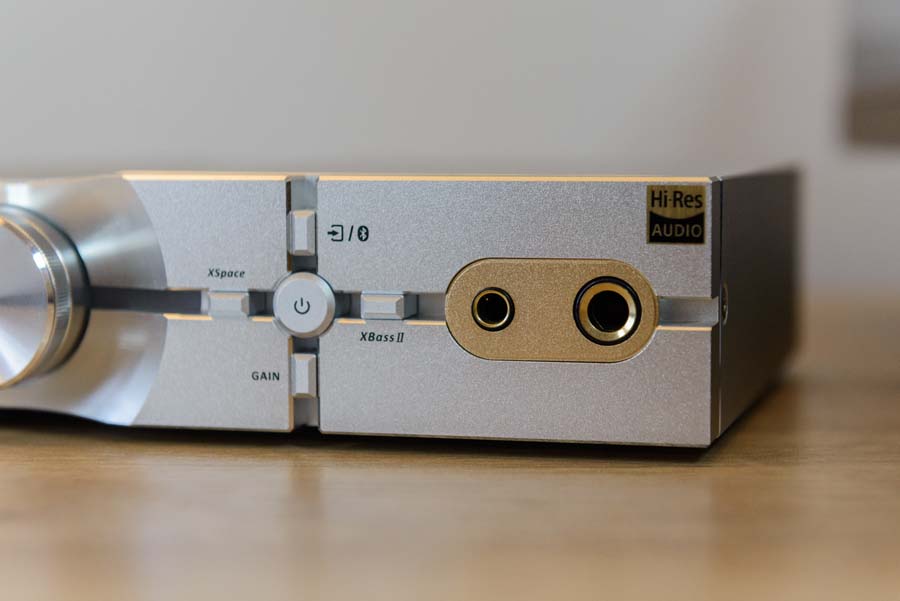

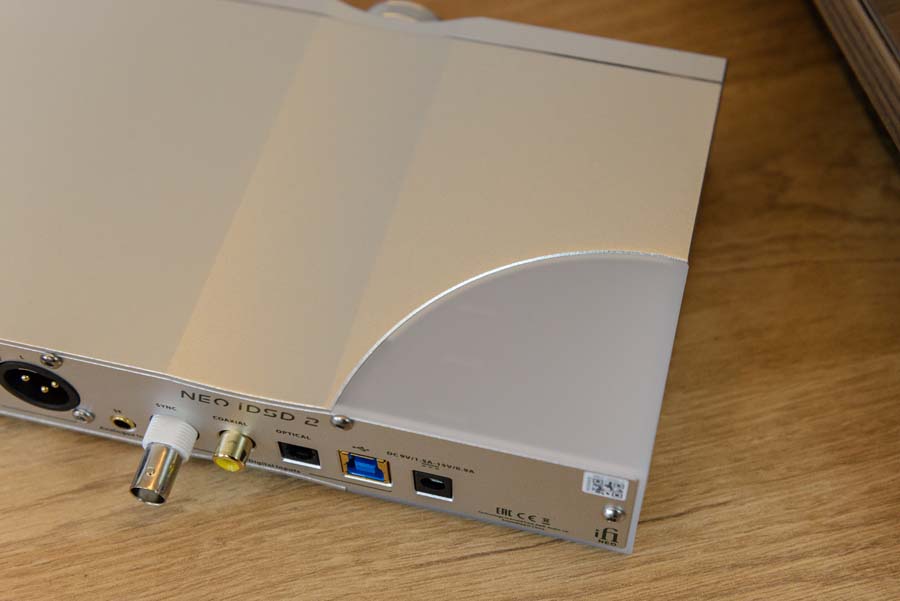
QUIBBLES
It doesn’t save your last used settings in terms of pre-out or fixed output volume, meaning to use it as a pre-amp you have to select variable volume in the settings each time you turn it on. The slight noise when switching inputs as a pre-amp is a little annoying, but I understand this is done to improve sound quality over using regular relays.
CONCLUSION
The iFi Audio NEO iDSD 2 thoroughly improves upon the first iteration by including a headphone amplifier section that is worthy of the DAC section. You get a hugely versatile piece of kit for under £1000; the DAC section is exceptionally good and has that signature natural sound that iFi audio do so well whilst the headphone amplifier powers most headphones with ease. It’s clean sounding too, allowing the excellent DAC section to shine through, and the various gain settings mean you can listen to almost any headphone through this DAC/Amp.
XSpace and XBass II give you some flexibility in terms of tailoring the sound to your preference and the included 4 digital filters will also give you slightly different sounds. The analogue input is a welcome feature and allows this to be used as a dedicated headphone amp or as a pre-amp into active monitors or power amp.
I could go on and on and on about this small little box of wonders, but the main thing is that it does what it sets out to do in such a great way that it’s hard to find fault with it.
AT A GLANCE
Build Quality And Features:
Solid metal casing, great quality ports and buttons
Sound Quality:
Smooth yet detailed
Resolving and natural
Value For Money:
Extremely versatile and under £1000, it’s very good value indeed
We Loved:
The sound and functionality
The included features are useful rather than gimmicky
We Didn’t Love So Much:
The way you must set the pre-out variable volume every time you turn it on
Slight noise when using it as a pre-amp between different inputs
Elevator Pitch Review: If you’re looking for a DAC that has natural tonality with excellent resolving capabilities this should be on your list, if you also need a powerful headphone amp in the same unit it the there’s not that many all-in-one units as good as this. It’s incredibly versatile and will handle most headphones you throw at it whilst fitting neatly into most systems that require a DAC.
The pre-amp section is very clean and there is an analogue input for hooking up external analogue sources, this is a bit of a jack of all trades but doesn’t fall down at any point…plus It’s great value for money.
Price: £899
Oscar Stewart
TECHNICAL SPECIFICATIONS
- Digital Inputs: USB3.0 B (USB2.0 compatible); S/PDIF (coaxial/optical); Bluetooth 5.4 (aptX Lossless, aptX Adaptive, aptx, LDAC, HWA/LHDC, AAC and SBC)
- Analogue Inputs: UnBAL 3.5mm
- Clock: External Sync Clock 10MHz, 1Vpp nominal, 75Ω. Sinewave or Squarewave
- Format: PCM 768kHz; DSD 512 (22.6MHz); MQA Full Decoder
LINE SECTION
- Balanced Outputs XLR: 19.5V max. (variable) 4.4V fixed
- UnBAL Outputs RCA: 10.5V max. (variable) 2.2V fixed
- Output Impedance: XLR ≤100Ω; RCA ≤50Ω
- SNR: <-120dB(A) @ 0dBFS
- DNR: >120dB(A) @ -60dBFS
- THD+N: <0.0015% @ 0dBFS
HEADPHONE SECTION
- Balanced 4.4mm Output: 3.5V / 19.5V max. (12Ω – 600Ω Headphone)
- UnBAL 6.3mm Output: 4.5V / 9.50V max. (12Ω – 300Ω Headphone)
- Balanced Output Power: >19.5V/650 mW (@ 600Ω); >13.3V/5,551 mW (@ 32Ω)
- UnBAL Output Power: >10.5V/184 mW (@ 600Ω); >9.5V/2,832 mW (@ 32Ω)
- Output Impedance: <1Ω
- SNR: >120dB(A) (3.3V 6.3mm/6.2V 4.4mm)
- DNR: -120dB(A)
- THD + N: <0.0015% (125mW @ 32Ω)
- Power supply requirement: DC 9V/1.5A – 15V/0.9A [centre +ve] (*a power supply unit must be able to deliver minimum rated repetitive current)
- Power consumption: No Signal ~5W; Max Signal ~13.5W
- Dimensions: 214 x 158 x 41 mm (8.4″ x 6.2″ x 1.6″)
- Net weight: 916g (2.0 Ibs)






















































































































































































